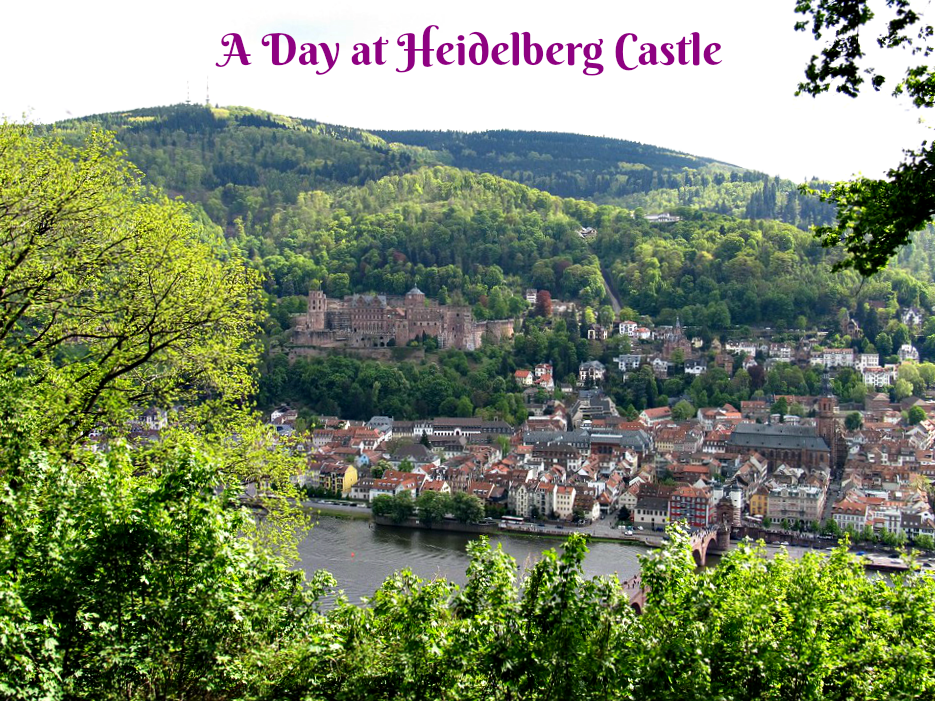
One of the first things we research when deciding what to see during our travels, is whether or not castles and palaces are nearby that we can visit. We love the rich history of these structures and the beauty they present- even when in disrepair. The hilltop landmark of Heidelberg, Heidelberg Castle or Heidelberger Schloss, is no exception. Heidelberg Castle, Germany is said to be among the most important Renaissance structures north of the Alps. The red sandstone ruins tower over the Neckar valley and standout against a beautiful backdrop of deep green forests.
Plan at least a day to explore Heidelberg and it’s many attractions. When visiting, it’s worthwhile to not only take a guided tour of the castle, but to visit the gardens, see the huge wine barrel, explore the apothecary museum and take a ride on the funicular railway. And that’s all before visiting the town itself!
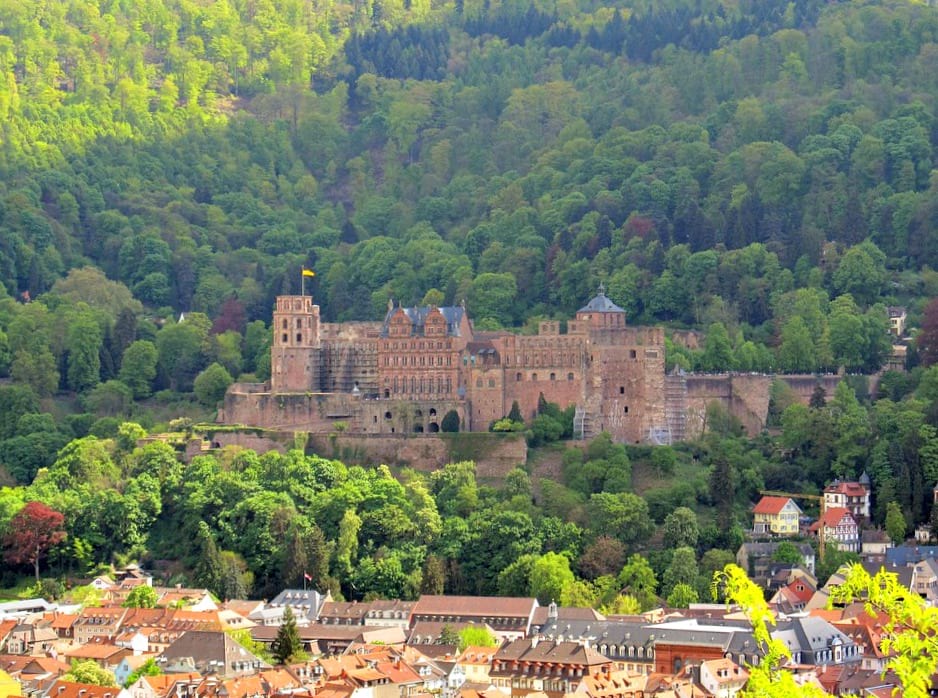
Mark Twain described Heidelberg Castle in his 1880 travel book A Tramp Abroad saying:
“A ruin must be rightly situated, to be effective. This one could not have been better placed. It stands upon a commanding elevation, it is buried in green woods, there is no level ground about it, but, on the contrary, there are wooded terraces upon terraces, and one looks down through shining leaves into profound chasms and abysses where twilight reigns and the sun cannot intrude.”
It was so well placed that the earliest castle structure, built in the early 1200’s, was later expanded into two castles. As the home to the King of Germany in 1401, expansion became a necessity. Not only was additional space needed his for court and entourage, but so were additional defenses. In the end, it was no longer a castle, but a fortress.
The present structures had been enlarged by 1650 but were later destroyed by wars, fires, lightening strikes and ultimately, pillage and neglect. For years, the citizens of Heidelberg had used the castle stone, wood and iron to build new houses. Fighting the government of Baden’s intention to destroy the ruins, Count Charles de Graimberg, in the 1800’s, began the difficult task of conserving the castle ruins.
A quote by Victor Hugo following his visit in 1838 sums up the castles demise, “Five hundred years long it [Heidelberg Castle] has been victim to everything that has shaken Europe, and now it has collapsed under its weight.”
- Gate
- Statues in the Courtyard
- Castle Ruins
Today, more than 1 million visitors arrive annually to see the impressive remains. It has become one of the most popular tourist destinations in Germany, with most of the foreign visitors coming either from the USA or Japan.
I suggest reading more Heidelberg Castle history on their website. It’s interesting to learn about who lived within the castle walls, why the French repeatedly attacked the castle in the 17th century during the War of the Grand Alliance, and how, after repairs were started, not one, but two lightening strikes eventually reduced the castle to ruins.
Touring the Palace Interior:
The Palace interior may only be viewed as part of a guided tour, and I highly recommend taking one. Guided tours are held hourly in German or English. While the castle hasn’t been restored to its full former magnificence, there is plenty to see and the tour provides an interesting history and a look at some of the many rooms in the castle. Wandering the outside of the castle is great if you’re extremely limited on time, but you’ll miss some of the interesting stories, restored rooms and a large model of what the castle used to look like before it’s destruction.
I still remember K’s favorite part of the tour – when we found out a hole in the wall was for people to vomit so they could keep eating during celebrations. Yep, boys love disgusting facts.
Heidelberg Tun – Large Wine Barrel:
The Heidelberg Tun also known as the “World’s Largest Wine Barrel”, was built in 1751 by Prince Elector Karl Theodor. Why did they have such a large wine barrel? For taxes. The barrel housed the wine paid as taxes by the wine growers of the region.
The Tun holds 220,000 liters (58,124 gallons) of wine, stands 7 meters (22 feet) high, and is 8.5 meters (27.8 feet) wide! It was so large that a dance floor was built on top of it. The quality of wine wasn’t that great as it was produced from a variety of grapes, but as you can imagine, that was made up for in quantity.
Apothecary Museum:
One of my favorite parts of the day was visiting the Apothecary Museum, housed on the lower floor of the Otto Heinrich Building. Learn about the history of the German pharmacy and dispensaries in this unique museum. Visitors will see a complete pharmacists’ office with a laboratory and displays of over 1,000 raw drugs representing medicine from the 17th to 19th centuries.
- Posing in the garden
- old stone bridge
- Wall ruins
- Views of Heidelberg
Palace Gardens:
Save time during your visit to stroll through the palace gardens, the once famous Hortus Palatines. The Hortus Palatines were formerly regarded as a masterpiece of their time but remained incomplete as the Thirty Years’ War broke out in 1618. After falling into disrepair, the area was used as a vegetable garden in the 18th century. During the next century, it was planted with botanical rarities in the style of an English landscaped garden. Today, visitors can explore the gardens from the different terraces for breath-taking views of the palace and the Neckar valley.
Don’t forget your camera and consider dressing a bit nicer for taking family photos. We saw several families having photo sessions in the gardens. Many couples get married in this royal atmosphere each year. Once there, you’ll see why it is an ideal location for updating your family portraits.
- Views from Königstuhl station
Funicular Railway:
As the Palace Ticket includes the use of the Funicular Railway, I highly suggest saving time to ride. There are four stations: Kornmarkt (Heidelberg’s old town), Castle (Schloss), Molkenkur, and Königstuhl. After visiting the castle, we took the Funicular to the top for incredible views. And it’s just a cool ride, especially for kids. If traveling with kids, and if you have extra time, consider the Forest Adventure Trail at the Königstuhl stop. We didn’t have time for the trails, but we did take time to stop at both Molkenkur and Königstuhl to have a look around and to enjoy the fantastic views over the Necker valley.
See more on the stations here.
Getting There:
From Heidelberg central station, take bus line 33 to the stop Bergbahn. Then take the funicular railway to Schloss (Palace) station. Walking from the train station to the funicular railway would take approximately 40 minutes, so the bus will be your best bet.
Please note, we came in from Neckargemünd and got off the train at Heidelberg-Altstadt. We were able to walk 10 minutes from the train station to Bergbahn instead of taking a bus. However, if you’re not coming from the east, you’ll need to get off at central station.
If driving in, please be aware that parking is said to be limited. You could end up waiting to park, so plan accordingly.
Heidelberg Castle
D-69117 Heidelberg
Germany
Website: http://www.schloesser-magazin.de/en
Ticket Prices:
Palace Ticket:
Adult € 7
Reduced € 4
The Palace Ticket includes the courtyard, great tun, apothecary and funicular railway.
Guided Tours: (additional fee)
Adult € 5
Reduced € 2.50
Families € 12.50
Audio Guide (available in several languages) € 5
*Reminder – the Palace interior may only be viewed as part of a guided tour.
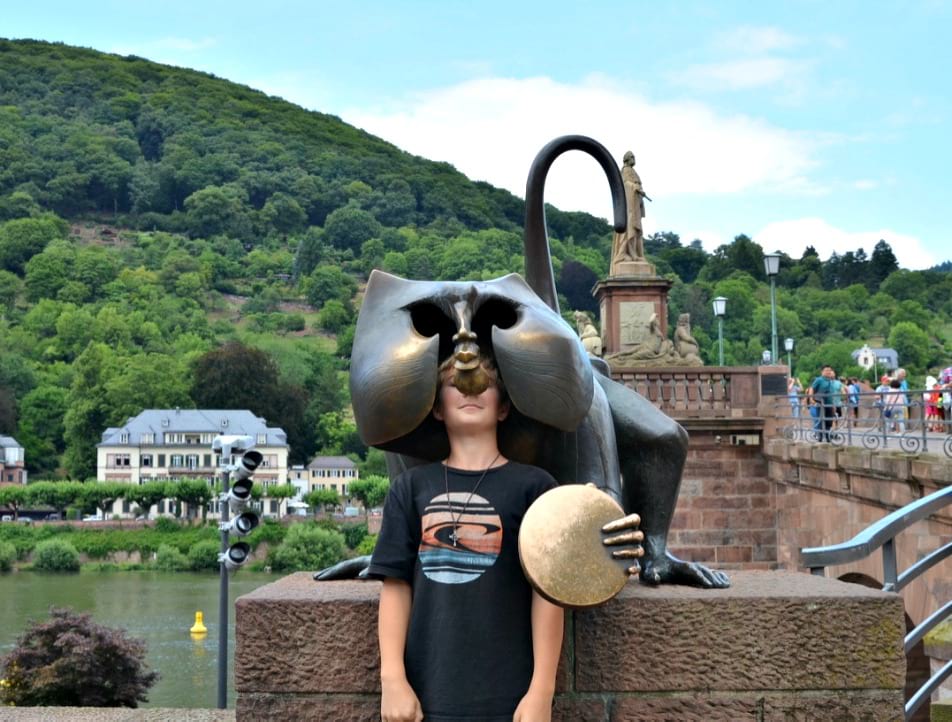
During a day trip, we explored Heidelberg Castle as well as a few must-see sights in Heidelberg such as the Old Town, the fountains and the old stone bridge (Karl Theodor Bridge) which crosses the Neckar River. We based ourselves out of the quiet village of Neckargemünd and took the short train ride into Heidelberg early in the morning.
One of the most popular tourist destinations in Germany sits perched on the Königstuhl hill. Heidelberg Castle Germany, even in ruins, reflects the power of its former residents. It’s an extraordinary example of Renaissance architecture and well worth a visit any time of year.
If you need more tips for your German adventures, Fodor’s Germany includes Heidelberg Castle as well as many other must-see destinations.
You may also like Fairytale Castle – our tips for visiting Neuschwanstein Castle.
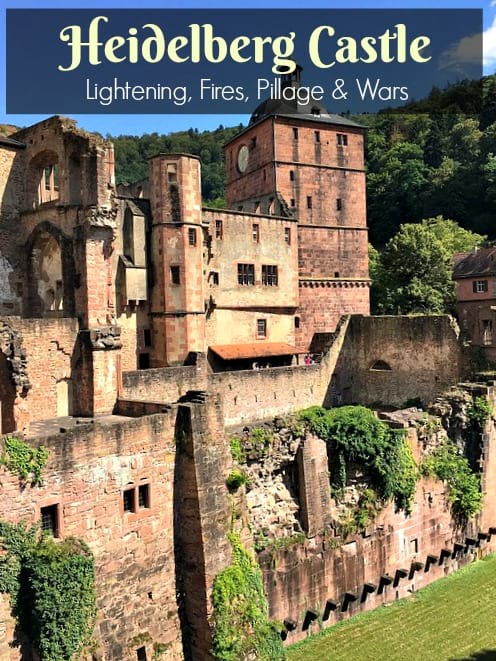
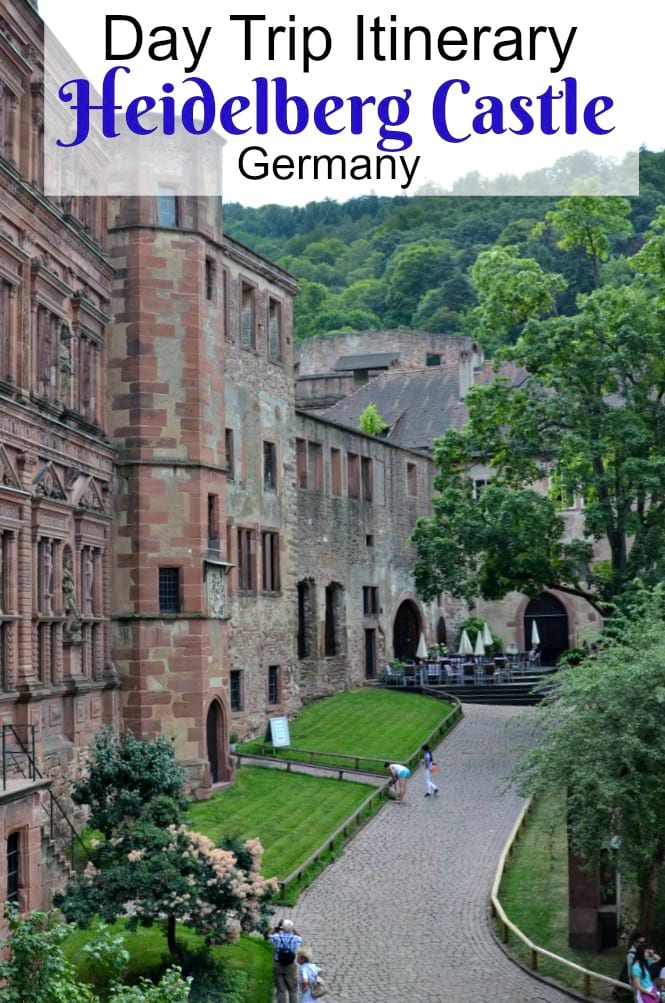
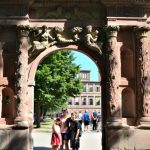

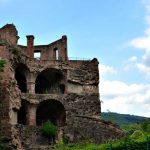
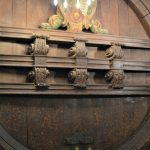
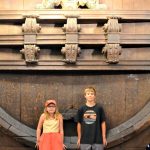
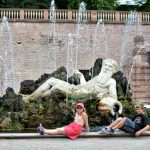
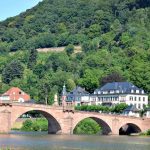
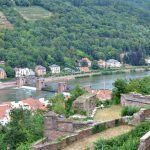
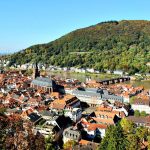
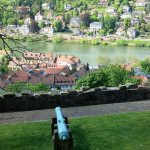
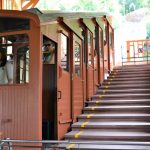
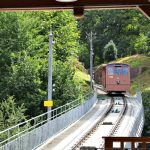
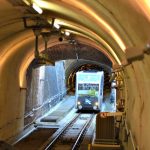


Leave a Reply